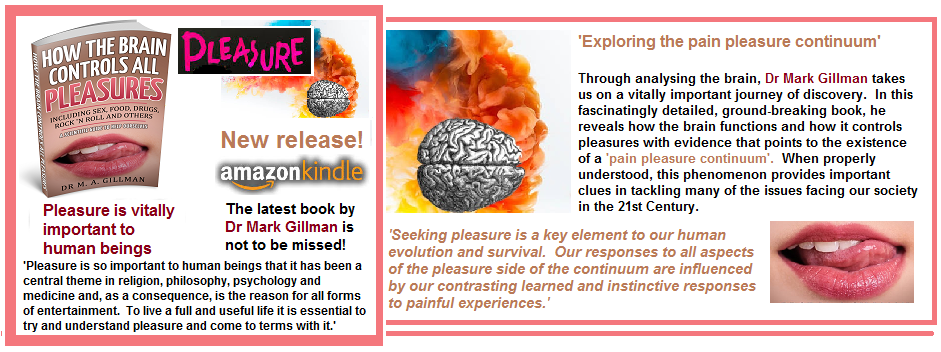Click here to get your copy of the latest book by Dr Mark Gillman!
https://www.amazon.com/dp/B07B21J7JW
Emotions and feelings – lower animals and humans express similar emotions
Emotions are the cornerstone of human existence. Without the wide array of emotions that colour our everyday lives, life would be dull indeed. Happiness, sadness, elation, ecstasy, anger, calmness, envy, jealousy, hate and love are some of the emotions that add relish and spice to life and make it interesting and worthwhile. In 1871, Charles Darwin noted that lower animals and humans share and express similar emotions such as pleasure, happiness and misery.
There are two components to an emotion: a characteristic physical sensation and a conscious feeling. For instance, we sense the feeling of butterflies in our stomach and begin to sweat, which alerts us to the feeling of anxiety. The physical sensation of butterflies and sweating is an emotional state and the conscious feeling associated with it, in this case anxiety, is a feeling.
As Kent Berridge has suggested, pleasure adds ‘a sort of gloss on sensation, a value added.’
Conscious feeling involves activity mainly in the frontal and cingulate cortices (of the brain. On the other hand, emotional states involve a number of brain and other non-brain systems such as the autonomic and peripheral nervous systems, the endocrine system via various hormones such as adrenalin and cortisone and the musculo-skeletal system.
In contrast to feelings, emotional states are controlled by subcortical structures such as the amygdala, hypothalamus and brainstem (midbrain, pons and medulla oblongata. To get a handle on the underlying mechanisms that produce emotions, we need to understand the interplay between the cognitive feeling as located in the cortex and the physical sensation mediated by the subcortical brain. To do so, we must examine and understand four components:
- The mechanisms via which a stimulus obtains emotional significance through the interaction between the conscious cortical and the unconscious subcortical processes mediated by the autonomic nervous system;
- Once a stimulus emerges as emotionally significant we need to find the mechanisms which result in the consequent activity in the autonomic nervous system and the musculo-skeletal systems;
- The neural circuits in the cortex which are activated and produce feelings;
- How the feedback to the brain from our senses and organs plus cognitive cortical input cooperate to produce the final emotional experience.
In our time, people are so brain focused that they often do not appreciate the importance of feedback to the brain which occurs in response to what we perceive through our five senses and by way of inputs received from our internal organs, joints and muscles; that, collectively speaking, are vitally important to the living process and its associated emotions and feelings.
Broadly speaking, for an emotion to occur, two processes ensue: the one mediated by the autonomic nervous system and the other by the musculo-skeletal system. The first process is general and preparatory and the second is specific and goal-directed. For instance, when we sense hunger, the hypothalamus detects a fall in blood glucose. The first phase is general arousal which is then followed by the various actions initiated by the cortex via the musculo-skeletal system that enable us to achieve the goal of eating.
Hence, the process of general and specific arousal involves interplay between the central and autonomic nervous systems and the feedback from the periphery, resulting in eventual action. The action is also guided by continuous feedback to the various systems involved as the activity progresses to completion. The periphery is also important because it is through the peripheral muscles of the face and physical posture that the nuances of emotion are conveyed to others in any social setting. There are various theories that have been proposed to explain the relationship between the brain and the peripheral input during emotional experiences.
Prior to the arrival of Henry James in the nineteenth century, the general view was that the emotion process followed a relatively simple, straightforward pattern: A husband sees his wife in bed with a stranger. The sight of the unexpected scene produces a response in his brain that results in the emotions of jealousy, envy and anger which then initiate various reflex responses that trigger the action associated with the situation e.g. a red face, clenched fists and a fracas with the intruder, or worse. 2 Conversely, the sight of the unexpected scene may also result in an entirely different response from the husband when emotions play out in an unexpected way. In this instance, instead of experiencing jealousy, envy and anger, the husband may show a mixture of jealousy and frustration because he was not told previously of the possibility of enjoying a ménage a trois with his wife and a stranger.

